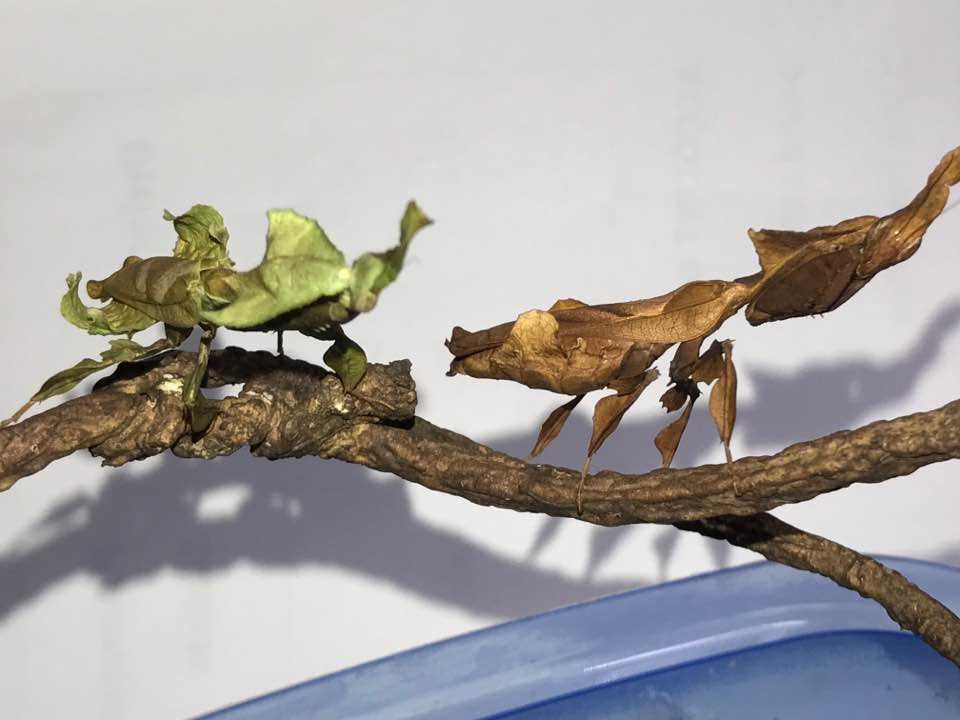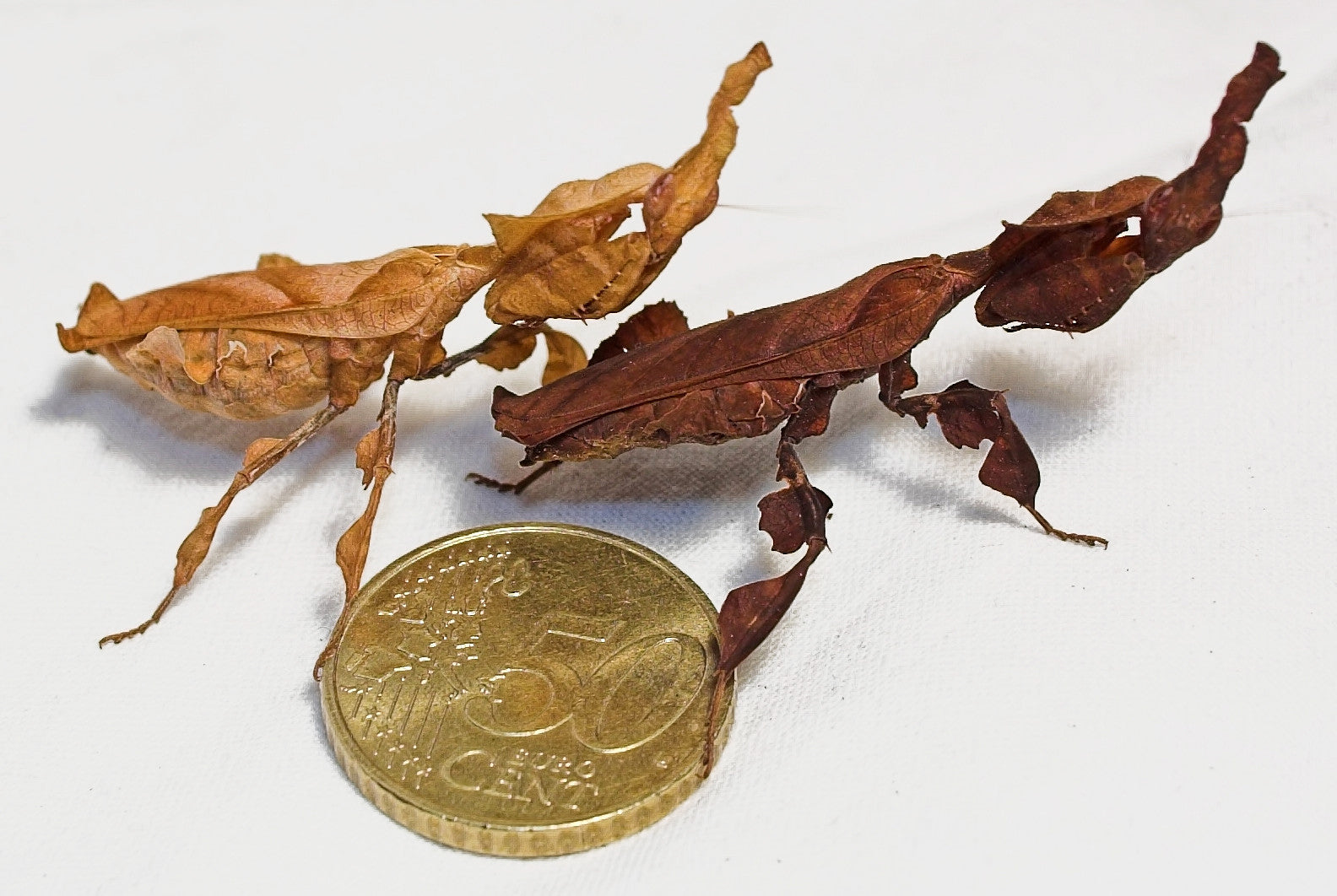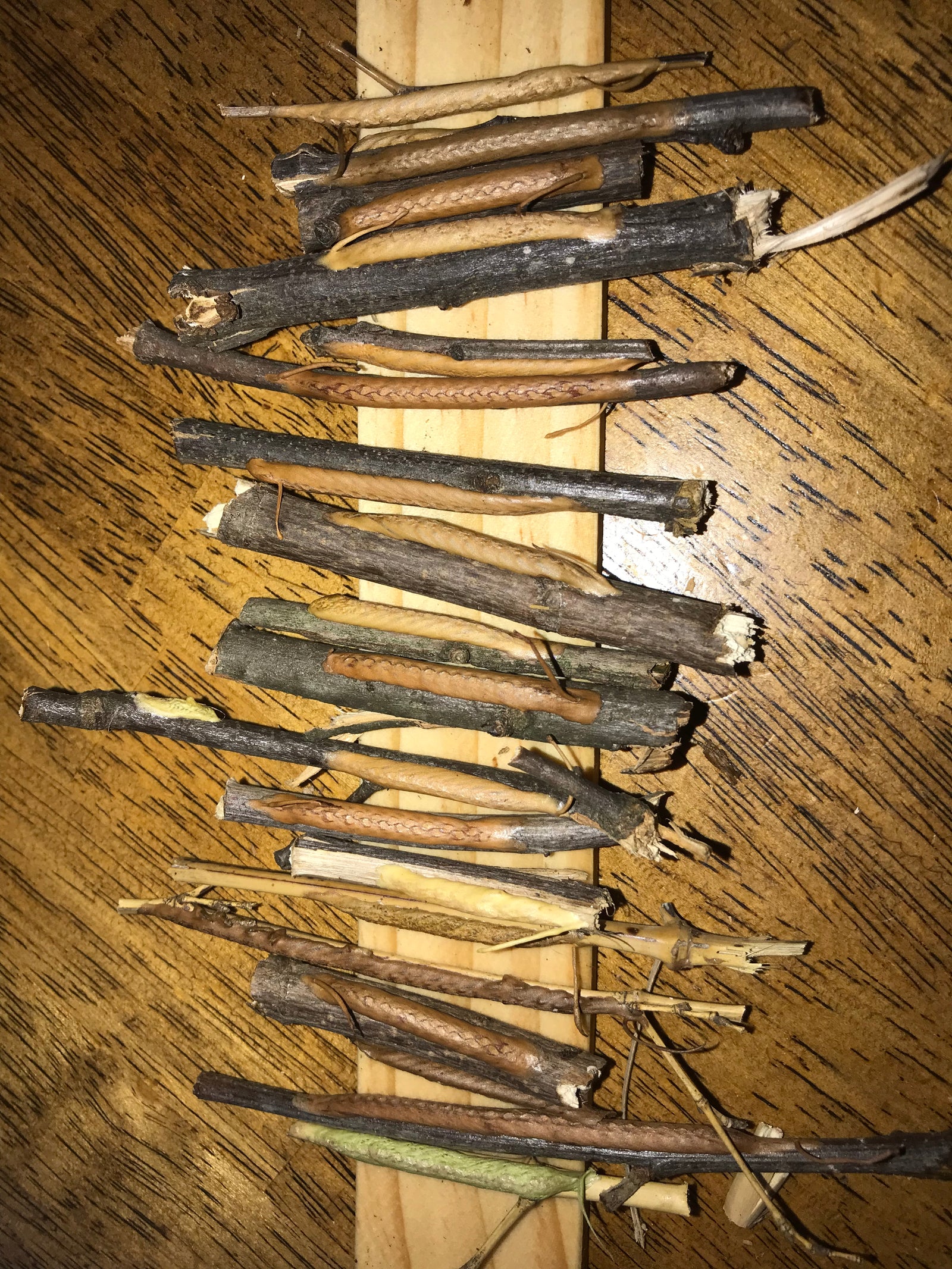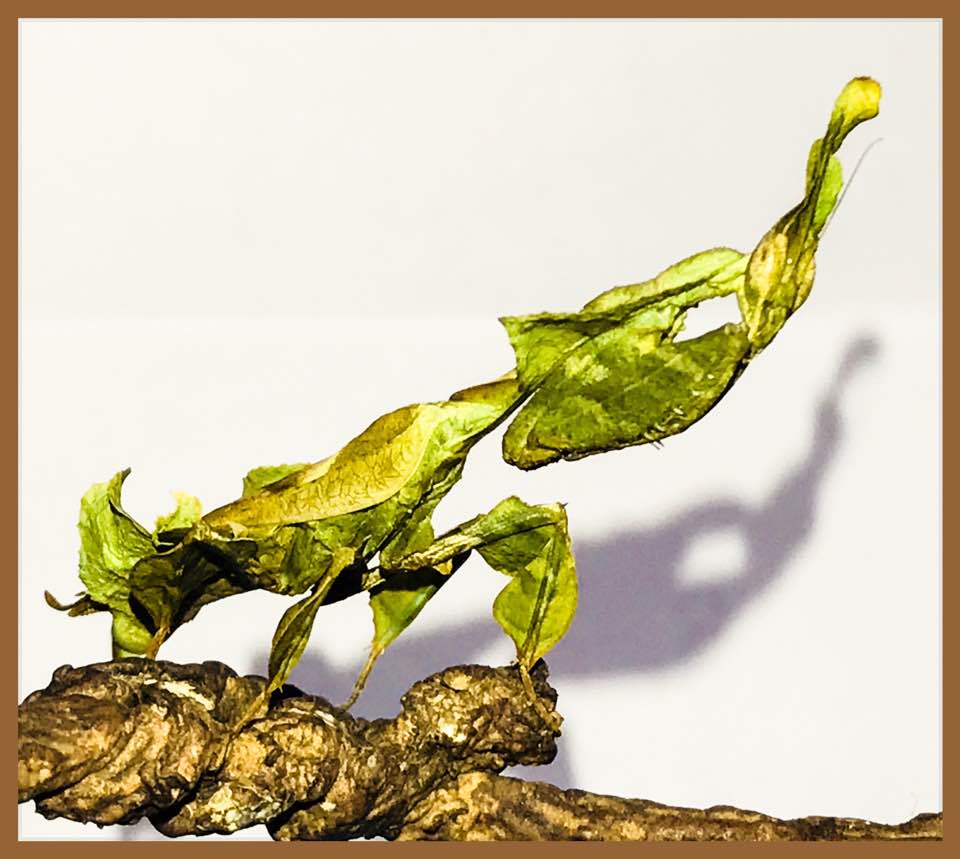




P paradoxa Ghost mantis All colors SALE
$24.50 - $75.00
GHOST Mantis Phyllocrainia (leaf head) Paradoxa
Ghosts are the most wanted and most beautiful praying mantis species available on the market. They are one of the few species that are communal. They can be kept together without eating each other. Ghosts are especially useful for pest control in grow rooms and greenhouse or tent environments, as they naturally eat the most common and prevalent pests in these environments. See this article regarding marijuana growers.
You can buy one or a discounted 4-pack or a NEW breeding group 10-pack!
Care Sheet
Phyllocrania paradoxa, commonly known as the ghost mantis, is a small species of mantis from Africa remarkable for its leaf-like body. It is one of three species in the genus Phyllocrania.
Compared to many other praying mantises, the ghost mantis is a "medium-size" one that grows to about 45 to 50 millimeters (1.8 to 2.0 in) long.
It comes in various brownish shades, from very dark brown (almost black) to greenish-gray. And I breed these that can be bright green. An individual's colors change between molts and depend on light and humidity.
Phyllocrania paradoxa is camouflaged to appear as dead, dried-up leaf material. It has an elongated head, a flattened, extended prothorax (together referred to as its "elaborate headdress and shoulder shields" by one enthusiast), and leaf-like protrusions from its limbs. The mantis also has a forewing that looks like a desiccated leaf, and the "creases" in the wings are shadings of pigment.
P. paradoxa oothecae can hatch up to three dozen young. Its first —and second-instar nymphs are dark-colored and defend themselves with ant mimicry.
Sexual Dimorphism
As with most or all mantis species, Phyllocrania paradoxa is sexually dimorphic, with females being larger than males. Females have six abdominal segments. Males are shorter, narrower, and have eight-segmented abdomens. At the 5th instar and above, males are thinner than females and have smaller appendages (lateral of the abdomen). At the 6th instar and above, their crowns are different. In adults, males have longer and thicker antennae than females and have transparent wings, which are longer than the abdomen, are good flyers, and are significantly thinner than the females. At the 5th instar and above, females are more compact than males and have bigger appendages. At the 6th instar and above, the crown of females are as wide as their head and more line and smoother than the male`s crown. When adult, females are significantly more compact than males, with shorter antennae and wings covering the abdomen.
Range
Phyllocrania paradoxa has a wide range across the African continent and its islands and can be found in Angola, Cameroon, Cape Province, Congo basin, Ethiopia, Ghana, Guinea, Ivory Coast, Kenya, Malawi, Madagascar, Mozambique, Namibia, Somalia, South Africa, Sudan, Tanzania, Togo, Transvaal, Uganda, and Zimbabwe. It is also found in South Europe.
Habitat
Ghost Mantis inhabit dry areas, bushes, shrubs, and trees in the open.
In captivity
The ghost mantis is one of the most popular species in the mantis hobby because it looks good, is very easy to keep, is relatively long-lived, and is not very aggressive toward each other, unlike many praying mantises. Therefore, older nymphs can be kept together without a problem, and they should be separated around pre-sub-adult. Female ghost mantises can live up to eight months as adults, while males live a much shorter life.
Feeding
L1: Small Fruit flies Drosophila melanogaster
L2: Small and Big fruit flies Drosophila hydei and Drosophila melanogaster
L3: Big fruit flies Drosophila hydei (sometimes even Greenbottle flies Lucilia sp.)
L4/L5: Greenbottle flies Lucilia sp.
L6 to L8: Greenbottle flies Lucilia sp. and Bluebottle flies Calliphora sp.
Adult: Bluebottle flies Calliphora sp.
Ooths are never guaranteed to hatch! Think before you order them!





